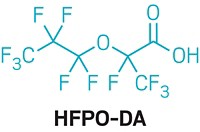Advertisement
Grab your lab coat. Let's get started
Welcome!
Welcome!
Create an account below to get 6 C&EN articles per month, receive newsletters and more - all free.
It seems this is your first time logging in online. Please enter the following information to continue.
As an ACS member you automatically get access to this site. All we need is few more details to create your reading experience.
Not you? Sign in with a different account.
Not you? Sign in with a different account.
ERROR 1
ERROR 1
ERROR 2
ERROR 2
ERROR 2
ERROR 2
ERROR 2
Password and Confirm password must match.
If you have an ACS member number, please enter it here so we can link this account to your membership. (optional)
ERROR 2
ACS values your privacy. By submitting your information, you are gaining access to C&EN and subscribing to our weekly newsletter. We use the information you provide to make your reading experience better, and we will never sell your data to third party members.
Water
After a devastating fire, what’s in the water?
Early water quality tests from Paradise, Calif. after the Camp Fire show elevated levels of organic contaminants and nitrates
by Katherine Bourzac
August 30, 2019
| A version of this story appeared in
Volume 97, Issue 34

In November 2018, the record-breaking Camp Fire consumed over 18,000 industrial and residential structures in the town of Paradise, California. After the blaze was contained, California State University, Chico water-quality engineer Jackson Webster’s group sprang into action, gathering samples from the area’s creeks. They hoped to answer a question looming over water-quality chemists as wildfires become more frequent and intense: after an entire town burns, what chemicals end up in nearby bodies of water? At the American Chemical Society national meeting in San Diego last week, Webster presented some initial answers. Compared with watersheds that do not drain from areas that burned, creeks draining from Paradise showed significantly higher levels of nitrogen. Webster said that septic tanks, which the town’s residents relied on instead of a sewage system, burned and left large holes in the ground. He suspects that rain draining from the holes likely carried nitrates into area creeks. Webster’s team also found per- and polyfluoroalkyl substances (PFAS) and other organic chemical contamination. Pentachlorophenol levels of 1–2 micrograms per liter are “the clearest indicator of urban burn,” Webster said. The chemical is used to treat wood, including utility poles. The data are not yet complete, however, Webster said. He’s still waiting on results of tests for toxic metals that might have come from, for example, the melted lead batteries of tens of thousands of burned cars.





Join the conversation
Contact the reporter
Submit a Letter to the Editor for publication
Engage with us on Twitter